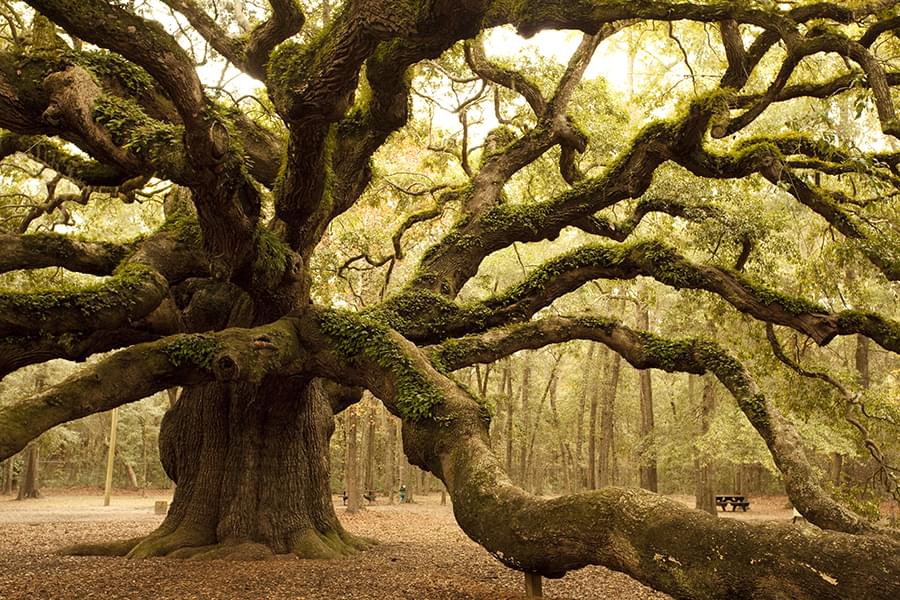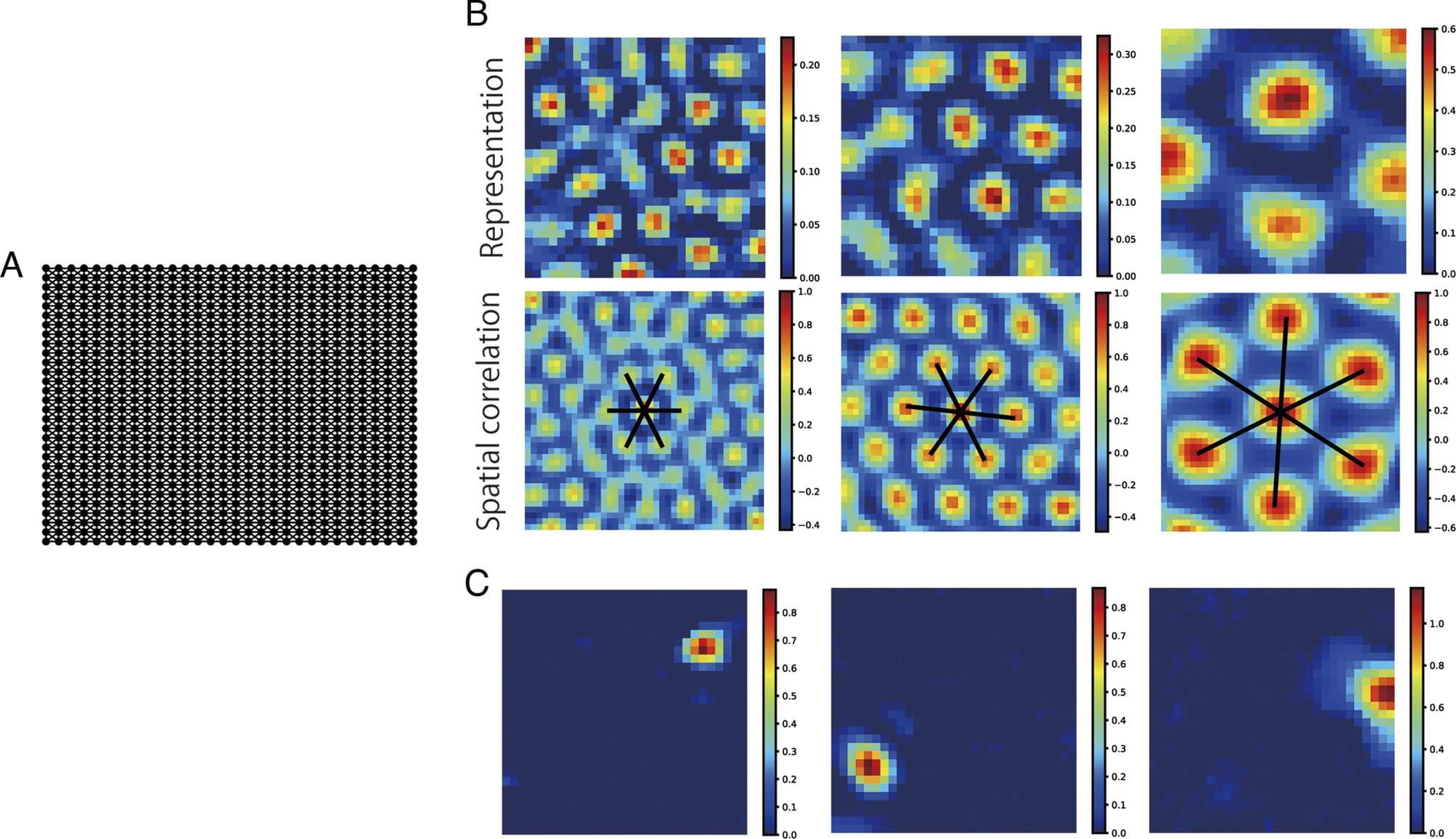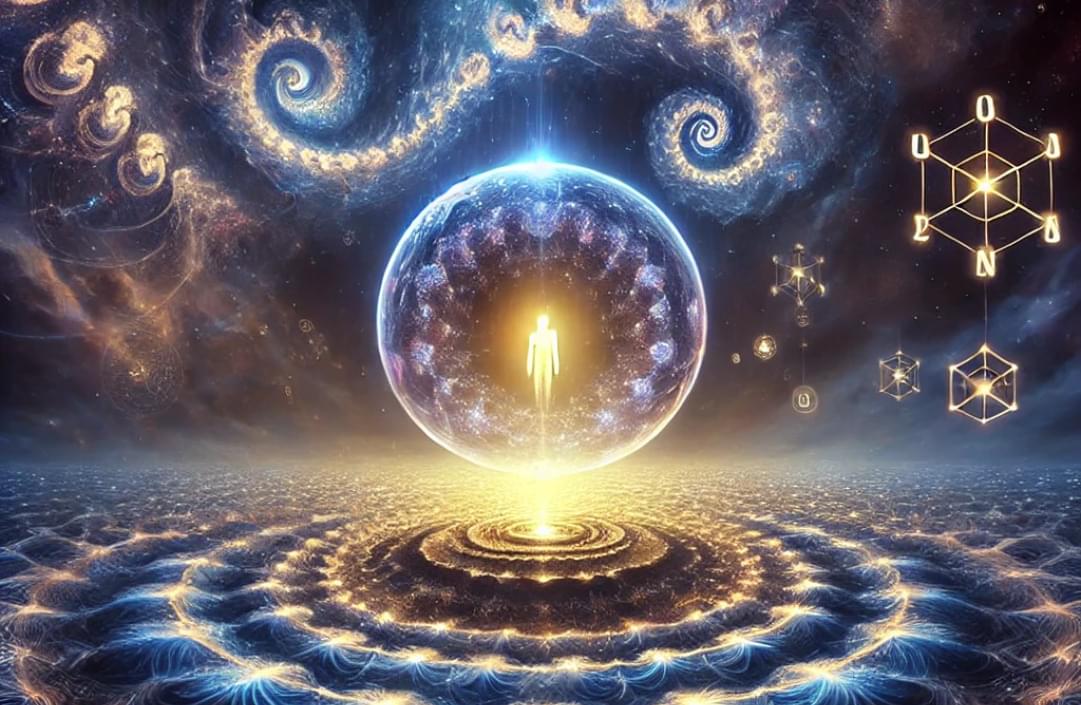MIT brain researchers developed a mathematical model to help define how modularity occurs in the brain — and across nature.



Scientists at the Okinawa Institute of Science and Technology (OIST), the National Institute of Information and Communications Technology, and the University of Tokyo have found a mathematical connection between spatial navigation and language processing, creating a model called “Disentangled Successor Information” (DSI).
This model generates patterns that closely resemble the activity of actual brain cells involved in both spatial awareness (place cells and grid cells) and concept recognition (concept cells).
The DSI model shows that the hippocampus and entorhinal cortex— brain regions previously known primarily for spatial navigation —likely use comparable computational processes to handle both physical spaces and meaningful ideas or words. Using this shared framework, both types of information can be processed through similar mathematical computations, which could be achieved in the brain by partial activation of specific groups of neurons.



In today’s AI news, ByteDance cofounder Zhang Yiming has become China’s richest man as investors bet on companies with AI potential. Zhang’s fortune has grown to $65.5 billion, ahead of beverage giant Nongfu Spring founder Zhong Shanshan’s $56.5 billion, according to Forbes estimates. Zhang, 41, derives his net worth from a 21% stake in the privately held tech behemoth …
And, OpenAI, Google, Meta, Microsoft, and smaller firms like Anthropic are losing massive amounts of money by giving away their AI products or selling them at a loss. “We are in the era of $5 Uber rides anywhere across San Francisco but for LLMs,” wrote early OpenAI engineer Andrej Karpathy. Chatbots are free, programming assistance is cheap, and attention-grabbing, money-losing AI toys are everywhere. AI is in its free(ish) trial era.
Meanwhile, the world’s largest contract electronics maker, Foxconn, said it has built its own large language model with reasoning capabilities, developed in-house and trained in four weeks. Initially designed for internal use within the company, the artificial-intelligence model, called FoxBrain, is capable of data analysis, mathematics, reasoning and code generation. Foxconn said Nvidia provided support …
Then, once upon a time, software ate the world. Now, AI is here to digest what’s left. The old model of computing, where apps ruled, marketplaces controlled access and platforms took their cut, is unraveling. What’s emerging is an AI-first world where software functions aren’t trapped inside apps but exist as dynamic, on-demand services accessible through AI-native interfaces.
In videos, learn how to integrate ElevenLabs Conversational AI platform with Cal. com for automated meeting scheduling. Angelo, takes you through the process with step-by-step instructions, and you can view and use the complete guide with Eleven Labs full documentation.
In other advancements, Anton Osika is the co-founder and CEO of Lovable, which is building what they call “the last piece of software”—an AI-powered tool that turns descriptions into working products without requiring any coding knowledge. Since launching three months ago, Lovable hit $4 million ARR in the first four weeks and $10 million ARR in two months with a team of just 15 people.
S first frame, influencing the entire clip. We We close out with, Jason Calacanis sitting down with Harrison Chase, CEO of LangChain, to explore how AI-powered agents are transforming the way startups operate. They discuss the shift from traditional entry-level roles to AI-driven automation, the importance of human-in-the-loop systems, and the future of AI-powered assistants in business. Harrison shares insights on how companies like Replit, Klarna, and GitLab are leveraging AI agents.

Regular use of math and reading skills could prevent cognitive decline with age, according to a new Science Advances study.
Cognitive skills of the population such as literacy and numeracy are important not only for individual incomes but also for the economic growth of nations (2–6). As a result, the aging of world populations presents an economic concern if the commonly assumed declines of these skills with age hold.
We use longitudinal variation in individual literacy and numeracy skills for a representative adult sample to create age-skill profiles that credibly separate age from cohort effects. The pure age component that we derive provides a different perspective on the impacts of aging populations. Overall, our results are not consistent with a view that a natural law dictates an inevitable decline in these skills with age. Potential cognitive declines only occur at later ages and are not inevitable with usage of skills.
This is consolation for countries with aging populations, but avoidance of skill losses is not automatic and appears related to stimulation from skill usage. These results thus suggest that age-skill relationships of adults deserve policy attention, consistent with concerns about the necessity of lifelong learning.

“I give you God’s view,” said Toby Cubitt, a physicist turned computer scientist at University College London and part of the vanguard of the current charge into the unknowable, and “you still can’t predict what it’s going to do.”
Eva Miranda, a mathematician at the Polytechnic University of Catalonia (UPC) in Spain, calls undecidability a “next-level chaotic thing.”
Undecidability means that certain questions simply cannot be answered. It’s an unfamiliar message for physicists, but it’s one that mathematicians and computer scientists know well. More than a century ago, they rigorously established that there are mathematical questions that can never be answered, true statements that can never be proved. Now physicists are connecting those unknowable mathematical systems with an increasing number of physical ones and thereby beginning to map out the hard boundary of knowability in their field as well.
Get MagellanTV here: https://try.magellantv.com/arvinash and get an exclusive offer for our viewers: an extended, month-long trial, FREE. MagellanTV has the largest and best collection of Science content anywhere, including Space, Physics, Technology, Nature, Mind and Body, and a growing collection of 4K. This new streaming service has 3,000 great documentaries. Check out our personal recommendation and MagellanTV’s exclusive playlists: https://www.magellantv.com/genres/sci…
Link to book on Amazon: http://t.ly/sMJW
QHT Paper: https://arxiv.org/pdf/2008.09356.pdf.
Non-technical Explanation: https://jespergrimstrup.org/research/.… 0:00 — Does reductionism end? 2:24 — Why there probably is a final theory 7:00 — Quantum Holonomy theory 12:53 — Surprising implications of QHT Does a final theory exist that can end our reductionist probing into ever shorter distances? Or is there no end to reductionism? There should be an end point because as the object of our measurement gets small enough, the high energies needed to measure it will create a black hole. And no information can get out of a black hole. So there is a limit to measurable reality. We have united seemingly dissimilar forces in the past. For example, the unification of electricity and magnetism, and weak and electromagnetic forces. To continue this reductionism, we want a theory that unifies all known forces. Today we have two overarching theories for forces: Einstein’s Theory of General relativity for gravity, and The standard model for the electromagnetic, weak and strong force. The problem is that the standard model is a quantum field theory, but general relativity is a classical field theory. The two are not compatible. Past attempts for a theory of everything include string theory and loop quantum gravity. But string theory does not produce any falsifiable results. Its mathematics is too flexible. Loop quantum gravity only addresses gravity and not the other forces. Quantum Holonomy Theory or QHT was pioneered by two Danish scientists, physicist Jesper Grimstrup and mathematician Johannes Aastrup. It begins by asking question, how can a theory be immune to further scientific reductions, so that reductionism ends? The presumptive idea is that the simplest way to describe the universe is objects moving around in three dimensional space. The theory is based on the mathematics of empty 3-dimensional space, just space, not even time. So the starting point of QHT is the mathematics of moving stuff around. There are an infinite many ways you can move an arbitrary object between points in space. Any one of these combination of movements from point A to point B, is called a recipe. A recipe for a combination of movements in physics is called a gauge field. A gauge field is the recipe of how to move one particle from point A to point B. Gauge fields are what makes up the forces in the standard model. Since they are recipes of moving things around in space, they represent how things interact with each other, or how forces work. The sum of all mathematical recipes is called the “Configuration space” of these recipes. The key insight in QHT is that the this space has a geometry and stores a lot of information. Geometry means that two different recipes for moving stuff around can be said have a relationship between each other. This is complicated but can be proven mathematically. Grimstrup and Aastrup found is that this geometry results in mathematics that looks almost identical to the mathematics that we already know from quantum field theory – this includes the mathematics of the Standard model. From the geometry you can obtain a a Bott-Dirac operator. The square of this operator gives us the Hamiltonian for both matter particles and force carrying particles. The Hamiltonian represents the formula for all the energy in a system. #QHT #Theoryofeverything Once you have a description of the energies of all the matter and forces in the universe, that’s all you need to need to understand how matter interacts in the universe, and is essentially everything we would need to describe the universe, once all the math is worked out. By simply considering the movements of objects in empty space, all this rich mathematics that appears to resemble the known mathematics of the universe comes out. If QHT is correct, then here are the implications: 1) The universe is quantum because the only way you can describe things moving in empty space is via quantization. 2) Gravity is not quantized, so there is no theory of quantum gravity. 3) No singularities can exist 4) There is no infinite curvature of space-time inside black holes 5) The universe could not have come from nothing, but from a prior universe — a Big Bounce! Become a patron: https://www.patreon.com/bePatron?u=17…
0:00 — Does reductionism end?
2:24 — Why there probably is a final theory.
7:00 — Quantum Holonomy theory.
12:53 — Surprising implications of QHT
Does a final theory exist that can end our reductionist probing into ever shorter distances? Or is there no end to reductionism? There should be an end point because as the object of our measurement gets small enough, the high energies needed to measure it will create a black hole. And no information can get out of a black hole. So there is a limit to measurable reality.
We have united seemingly dissimilar forces in the past. For example, the unification of electricity and magnetism, and weak and electromagnetic forces. To continue this reductionism, we want a theory that unifies all known forces. Today we have two overarching theories for forces: Einstein’s Theory of General relativity for gravity, and The standard model for the electromagnetic, weak and strong force.
The problem is that the standard model is a quantum field theory, but general relativity is a classical field theory. The two are not compatible.
Past attempts for a theory of everything include string theory and loop quantum gravity. But string theory does not produce any falsifiable results. Its mathematics is too flexible. Loop quantum gravity only addresses gravity and not the other forces.
Quantum Holonomy Theory or QHT was pioneered by two Danish scientists, physicist Jesper Grimstrup and mathematician Johannes Aastrup. It begins by asking question, how can a theory be immune to further scientific reductions, so that reductionism ends?


A fundamental goal of physics is to explain the broadest range of phenomena with the fewest underlying principles. Remarkably, seemingly disparate problems often exhibit identical mathematical descriptions.
For instance, the rate of heat flow can be modeled using an equation very similar to that governing the speed of particle diffusion. Another example involves wave equations, which apply to the behavior of both water and sound. Scientists continuously seek such connections, which are rooted in the principle of the “universality” of underlying physical mechanisms.
In a study published in the journal Royal Society Open Science, researchers from Osaka University uncovered an unexpected connection between the equations for defects in a crystalline lattice and a well-known formula from electromagnetism.